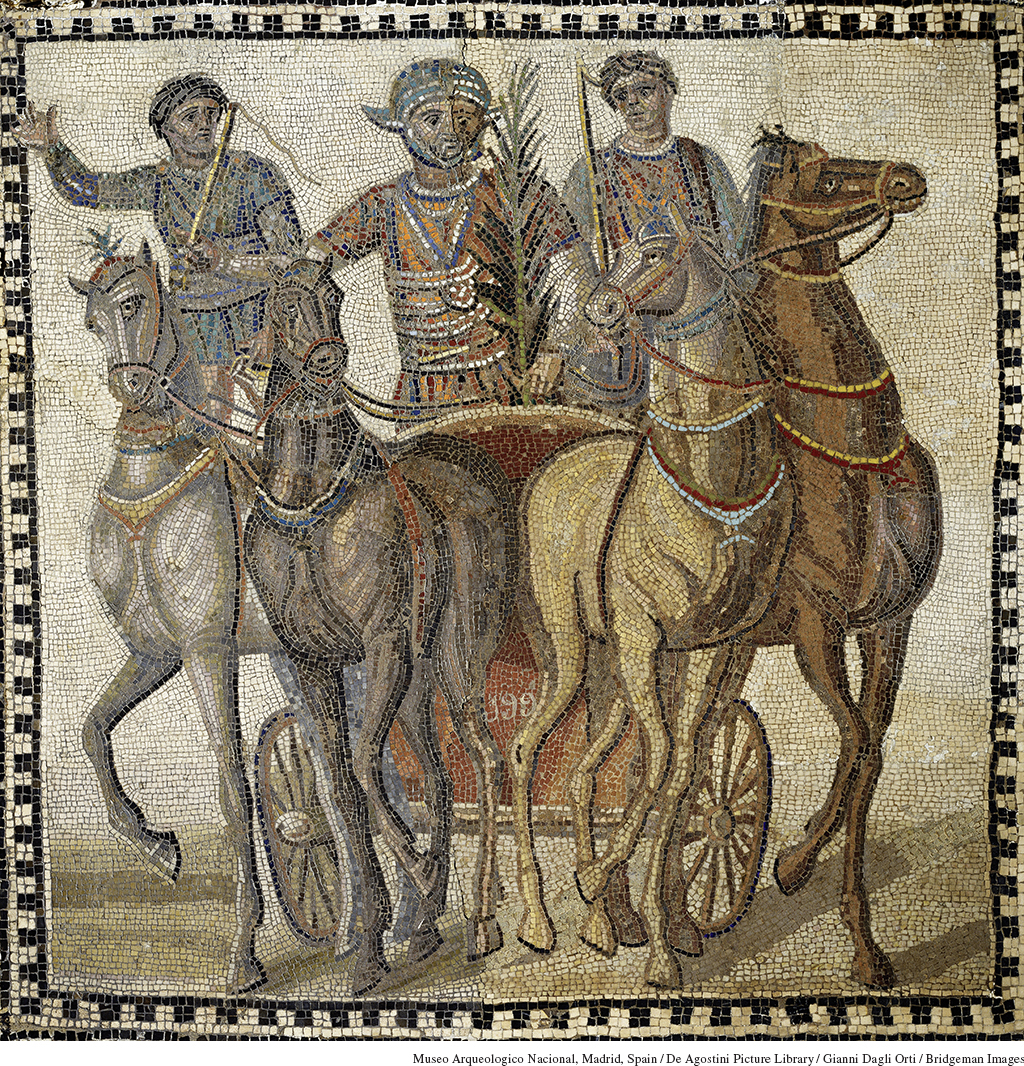Introduction for Chapter 6

IN 203 C.E., VIBIA PERPETUA, wealthy and twenty-two years old, was confined in a Carthage jail, nursing her infant. She had been condemned to death for treason after refusing to sacrifice to the gods for the Roman emperor’s health and safety. Perpetua recorded what happened when the local governor tried to persuade her to save her life:
My father came carrying my son, shouting “Perform the sacrifice; take pity on your baby!” Then the governor said, “Think of your old father; show pity for your little child! Offer the sacrifice for the imperial family’s well being.” “I refuse,” I answered. “Are you a Christian?” asked the governor. “Yes.” When my father would not stop trying to change my mind, the governor ordered him thrown to the earth and whipped with a rod. I felt sorry for my father; it seemed they were beating me. I pitied his pathetic old age.
Gored by a wild cow and stabbed by a gladiator, Perpetua died because she placed her faith above her duty of loyalty to her family and the state.
Rome’s rulers during what we call the Roman Empire punished disloyalty because it threatened to reignite the civil wars that had destroyed the Roman Republic. The refusal of some Christians such as Perpetua to perform traditional sacrifice was considered treason because Romans believed the gods would punish them for sheltering people who refused to worship them and rejected the traditional religion.
The transformation from republic to empire opened with seventeen years of civil war after Julius Caesar’s death in 44 B.C.E. Finally, in 27 B.C.E., his adopted son, Octavian (thereafter known as Augustus), created a disguised monarchy to end the violence, declaring that he had restored the republic. Augustus’s new system retained traditional institutions for sharing power—the Senate, the consuls, the courts—but in reality he and his successors governed like kings ruling an empire.
CHAPTER FOCUS How did Augustus’s “restored republic” successfully keep the peace for more than two centuries, and why did it fail in the third century?
Augustus’s innovations brought peace for two hundred years, except for a struggle between generals for rule in 69 C.E. This Pax Romana (“Roman Peace”) allowed agriculture and trade to flourish in the provinces, but paying for the military eventually weakened Rome. Previously, foreign wars had won Romans huge amounts of land and money, but now the distances were too great and the enemies too strong. The army was no longer an offensive weapon for expansion that brought in new taxes but instead a defense force that had to be paid for out of existing revenues. The financial strain drained the treasury and destabilized the government. Christianity emerged as a new religion that would slowly transform the Roman world, but it also created tension because the growing presence of Christians made other Romans worry about punishment from the gods. In the third century C.E., a crisis developed when generals competing to rule reignited civil war that lasted fifty years.